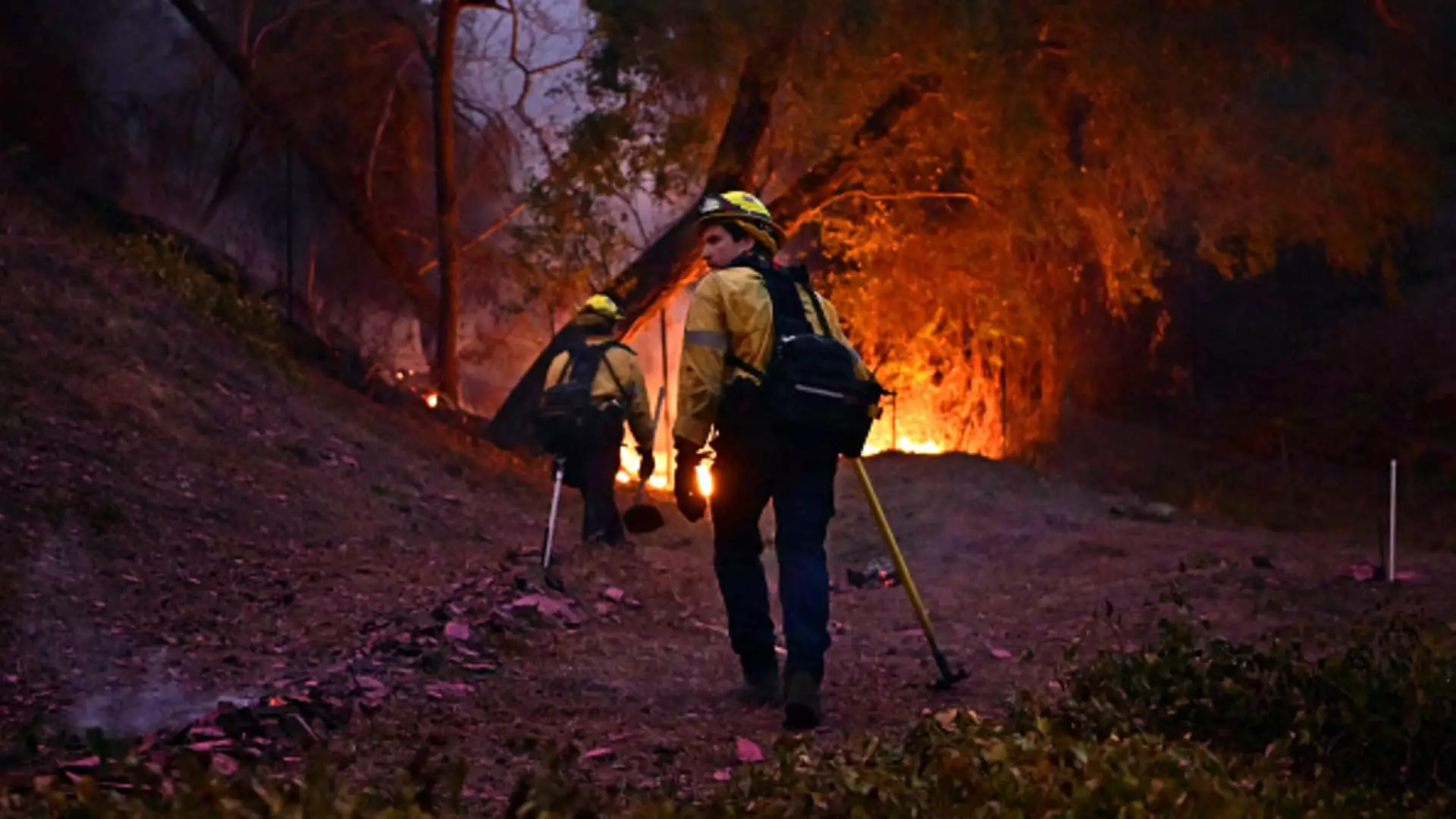The recent wildfires in Los Angeles have shaken the region, claiming lives and property and igniting a critical examination of preparedness and response. As the flames rage on, the Los Angeles County medical examiner’s office has confirmed that the death toll has tragically risen to 16. Initially, only 11 fatalities were reported, highlighting the tumultuous and evolving nature of disaster in a city that has long been vulnerable to the menace of wildfires. With ongoing investigations and the utilization of cadaver dogs in devastated neighborhoods, there are concerns that this figure may climb further as rescue and recovery efforts progress.
Two significant fires—Palisades and Eaton—have left an indelible mark on the local landscape, with five fatalities linked to the Palisades Fire and eleven to the Eaton Fire. The destruction has been extensive, with over 12,000 structures damaged or destroyed, an alarming expression of just how catastrophic these wildfires have become. Firefighters are engaged in a desperate battle to contain the infernos, utilizing helicopters to dump water on the flames while ground crews employ hoses in a race against time. The ongoing struggle highlights the severe fire conditions exacerbated by months of drought in the area, creating a perfect storm for such disasters.
Amid the chaos, community resilience shone through as thousands of locals mobilized to assist those affected. Donation centers experienced an overwhelming influx of volunteers, showcasing the strength of community bonds in times of despair. Yet, the sheer number of volunteers has presented challenges, as seen in Koreatown, where some were turned away due to capacity issues. Such community support emphasizes the collective responsibility and solidarity that emerges during crises, even amidst the backdrop of sorrow and loss.
As flames encroach upon populated areas, evacuation orders have become a frightening reality for tens of thousands of residents. Many have had to abandon homes, some returning to survey the damage, only to find their possessions reduced to ash. Local authorities are issuing stern warnings, indicating that ash and debris could harbor toxic substances like lead and asbestos, posing serious health risks. Officials stress the importance of staying away from hazardous areas to prevent further health crises in addition to the existing trauma of displacement.
The wildfires have ignited not just flames but a firestorm of political scrutiny as well. Criticism surrounds the adequacy of resources allocated to fire response services. Los Angeles Fire Chief Kristin Crowley has lamented the lack of funding and has expressed concerns regarding malfunctioning hydrants and water shortages. This raises serious questions about preparedness and infrastructure maintenance, as residents demand accountability from local leadership. Investigations have begun, with Governor Gavin Newsom directing state officials to evaluate why critical water resources were unavailable at such a pivotal moment.
As the Los Angeles community grapples with the immediate effects of the wildfires, the focus now shifts toward recovery and resilience. While officials are working diligently to establish assistance centers for those displaced and to begin the slow process of rebuilding, the emotional and psychological toll cannot be overlooked. Survivors are left to sift through the remnants of their lives, searching for anything salvageable amidst an overwhelming sense of loss.
Integrated recovery efforts must prioritize not only the physical rebuilding of homes and infrastructure but also the mental health support for those traumatized by these events. Local agencies ought to develop comprehensive plans to address the multifaceted needs of the affected population, ensuring that such catastrophes prompt better preparedness for the future.
The wildfires in Los Angeles illuminate the urgent need for improved firefighting resources, community support systems, and a renewed commitment to environmental stewardship. As the region faces an uncertain future punctuated by climate change challenges, vigilance, effective policy, and community solidarity will be essential in surmounting the hurdles ahead. The impact of these wildfires serves as a harrowing reminder of nature’s power, pushing for a collective realization that proactive measures are critical in safeguarding lives and homes from disasters of this magnitude.

